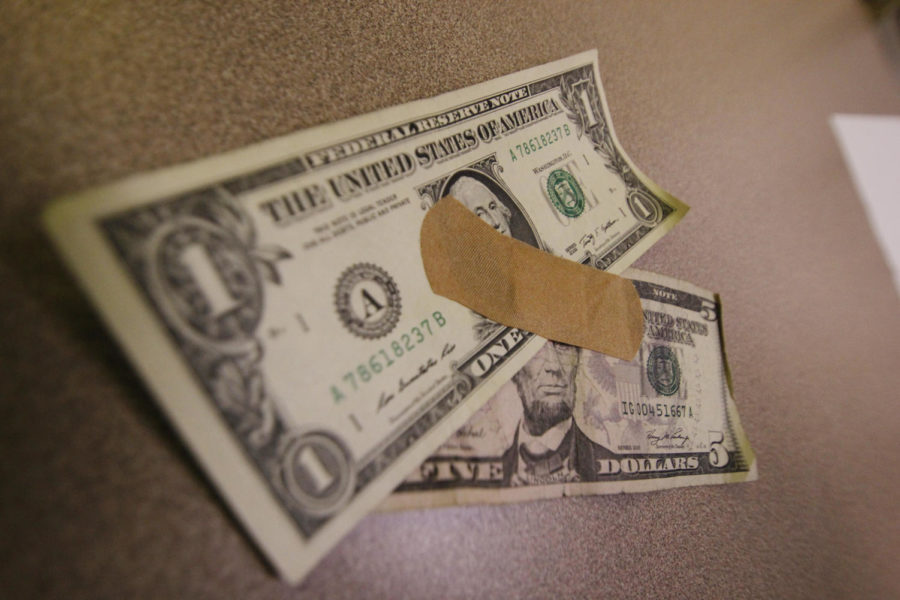Gross: Stafford loan decision offers only temporary solution
Iowa residents average nearly $20,000 a year in expenses from college.
August 27, 2013
A hot topic this summer has been the interest rate on government Stafford loans. The threatened increase of the rate from 3.4 percent to 6.8, originally postponed in July 2012, appeared once more in the summer of 2013. Washington D.C. remained tense as Congress’s Republicans and Democrats were unable to reach a decision by the July 1 deadline. As a result, the interest rate jumped to the dreaded 6.8 percent.
However, Congress was quick to announce that this was by no means final, as they planned to meet and further discuss the subject. When a compromise was reached, it was packaged as a wonderful solution to the problem of increased student debt, as the savior of our debt-riddled generation.
As a result of the new deal, this year’s interest rate is 3.86, slightly higher than last year’s but far better than 6.8 percent.
However, the new rate isn’t permanent. Instead of having a flat interest rate for multiple years, the new law has a year-by-year market-based rate. Each year’s rate will be decided in connection with the government’s cost of lending in order to minimize money spent on the student loan program.
What too few students are aware of is how potentially dangerous the new interest rate decision could be for them in future years. In comparison with the threatened 6.8 percent increase, this year’s interest rate of 3.86 percent seems worthy of celebration, but the market-based rate will eventually bring up the interest rate on loans.
Still doesn’t sound too bad, though, right?
Well, it won’t be five or 10 or 20 years before the market-based rate increases above 3.86 percent; it will be two years. Additionally, the Institute for College Access and Success believes that in five years, the interest rate will be high enough to cost students more money in total than even the 6.8 percent rate would have cost.
To quell the fears of a perpetually increasing interest rate, Congress’s deal did put a cap on the rate at 8.35 percent. Such a high rate cap shows that not only is Congress prepared for rates to rise that high, they actually expect it to.
The entire student loan system is already predicted to make the government more than $180 billion in profit over the next decade. The new interest rate decision is predicted to provide an additional $700 million of profit in the next decade. With this deal, Congress has decided that not only is the student loan program not worth spending money on, it actually necessitates that profit be made from it.
With the current administration’s huge push for affordable education, one might think that student loans would be a higher priority. The current goal of the student loan program seems to lean more toward making money than helping students, a somewhat conflicted message. The market-based rate is supposedly meant to prevent money from being spent on the student loan program, but with so much profit being created from the program already, what is the point?
In justification, some of the profits from the student loan program and the new interest rate bill will go toward alleviating the massive national debt.
Again, that’s something that hardly sounds bad. The ever-growing government debt in our nation is a huge problem, right?
But it doesn’t seem fair that our government’s debt is being paid at the expense of individual, goal-oriented students who are finding it harder and harder to pay for higher education each year. If the future of our young population and the education of the current college generation are so important, then it should be considered a greater priority and not the immediate solution to national debt.
That’s not to say the 6.8 percent interest rate was the best, or even a better, option. The 3.86 percent is, for the current year, far preferable. But the truth is that the compromise reached by Congress will only calm the masses for a few years, a decade at the most.
Today’s students might be relieved to know they will have relatively low loan interest rates in the next couple years. However, students of future graduation years will be dismayed by an interest rate that only seems to increase every year and caps at an unbelievable 8.35 percent.
The issue of Stafford loan interest rates will rise once again, when future student borrowers are thrown further into debt.







